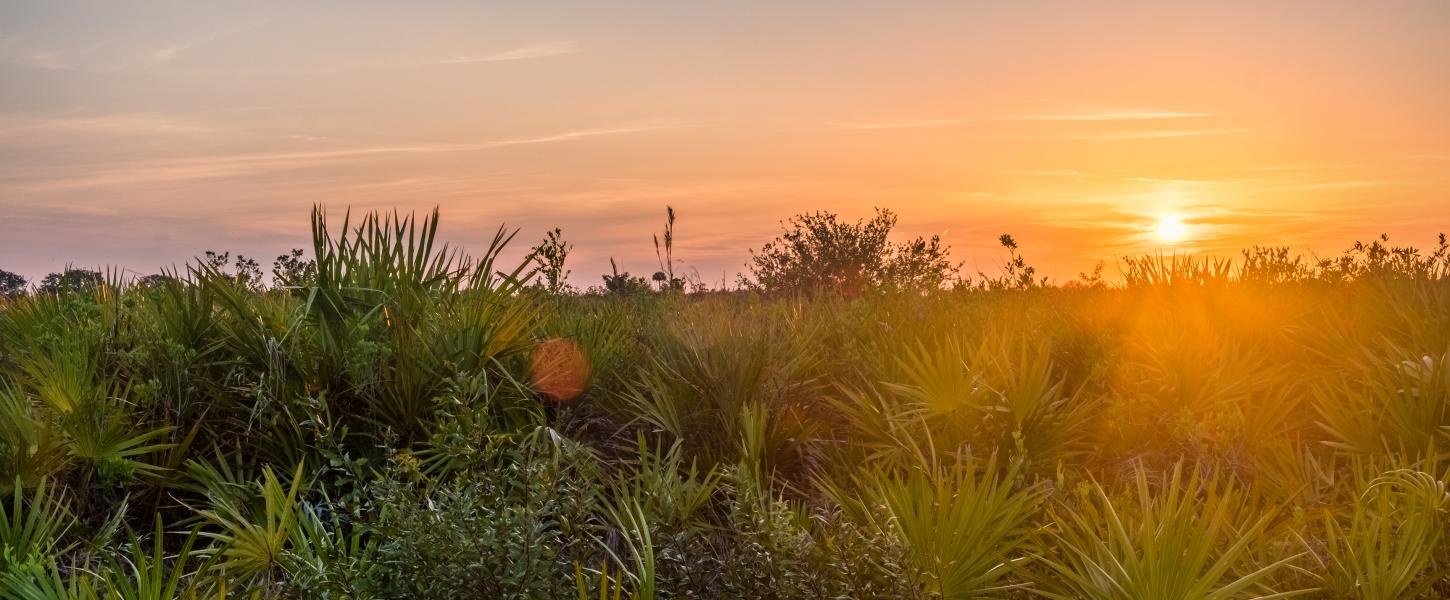History of Kissimmee Prairie

Kissimmee Prairie Preserve State Park's main drive is part of the Peavine Railroad. It was built in the early 1900s to accommodate the land boom in central and south Florida. The rail line no longer exists, but its few years of operation continue to influence this land.
The railroad built by the Colonization Land Company ran from Keanesville to its southern terminus at Prairie Ridge. Prairie Ridge is a community that existed partially in what is today Kissimmee Prairie Preserve State Park. Many potential property investors were hauled into the dry prairie ecosystem to a hotel during the winter months when the temperatures were pleasant and the soil was dry.
Some purchased land and then were astounded by the intense, waterlogged summers and were forced to leave. After many attempts to farm the land at Kissimmee Prairie, farmers realized this land was better suited for cattle grazing. Soon after, the Colonization Land Company went bankrupt and the elevated rail line was dismantled and used for ranching operations and commerce.
Some pioneers of the Kissimmee River Valley's expansive grasslands began pursuing the free-roaming cattle that had descended from Spanish explorers' herds. Settlers traveled Peavine Road to trade, gather supplies and socialize. In the late 1940s, the Latt Maxcy Corporation purchased and fenced their property, preventing people from traveling Peavine Road. They altered some of the prairie by digging ditches and cultivating pasture grasses and agricultural fields.
Most of the property was managed as native range, using fire to rejuvenate the grasses for the cattle. The historic accounts of the prairie are full of fascinating, independent characters who have helped shape this landscape. Their experiences and management practices are components of Kissimmee Prairie Preserve State Park.
The dry prairie ecosystem burns more frequently than any other ecosystem in Florida, every one to three years. During the spring and summer, lightning starts most of the fires, reducing the woody encroachment, fertilizing the prairie and providing prosperous habitat for the various prairie species.
Around 1940, the military acquired a large portion of land to train B-17 aircraft crews in air-to-ground bombings during World War II. The new training ground was called Avon Park Army Air Field. B-17 bombers and other aircraft used bombs ranging from 15-pound practice bombs to 2,000-pound demolition bombs containing 2-ton high explosives.
Accidental fires caused by exploding bombs probably contributed to keeping the prairie in excellent condition, similar to the fires that start naturally. After World War II, the military put part of the land up for sale. Initially, the land was purchased by various cattlemen.
In 1997, the state of Florida acquired 48,000 acres to establish Kissimmee Prairie Preserve State Park. Although there were several old targets within the Preserve, over time the prairie has reclaimed them. Adjacent to the west boundary of the Preserve, across the Kissimmee River, the Avon Park Air Force Range is active today.